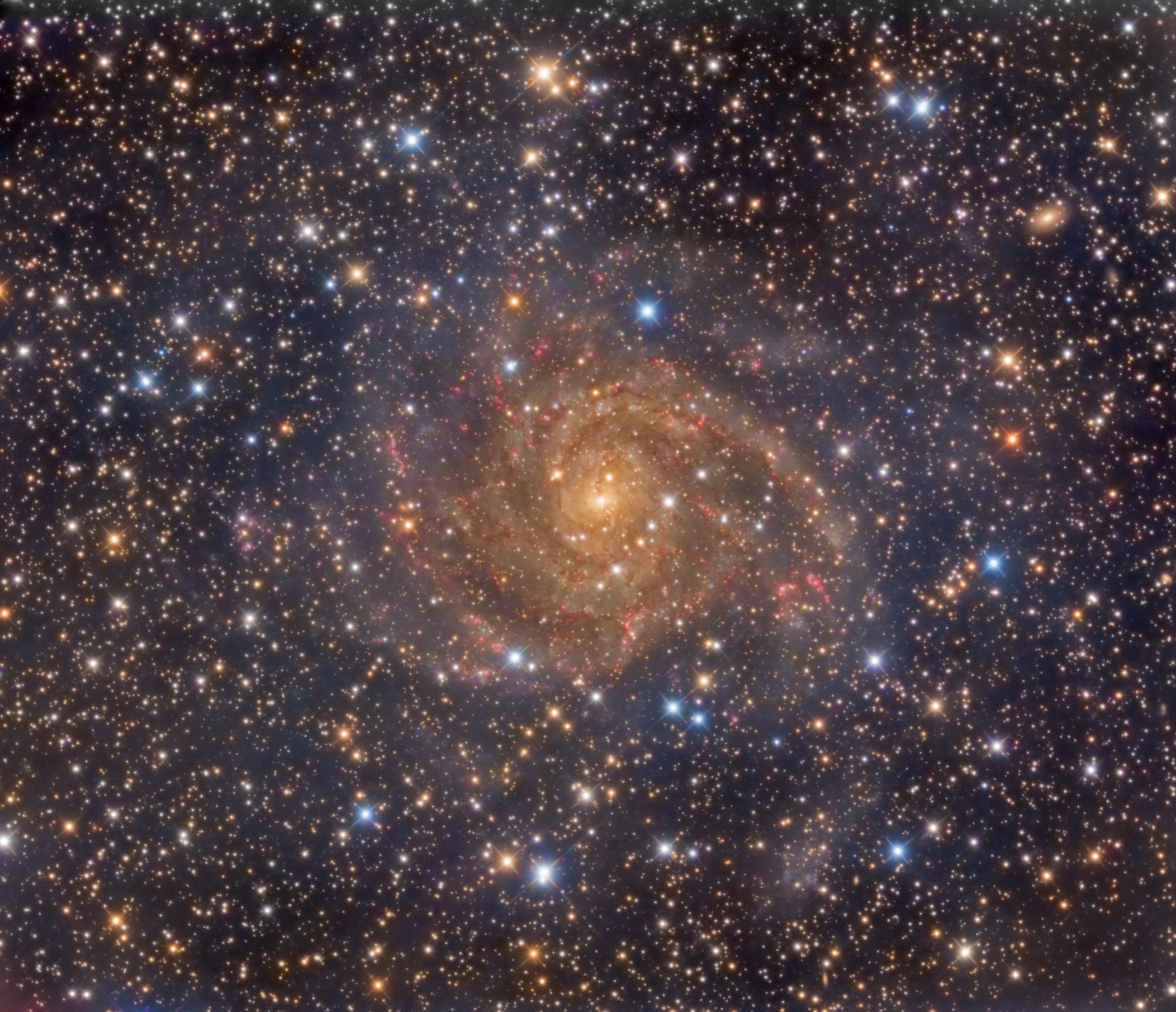Remember the big picture of Andromeda that showed 100 Million stars? That image resulted in a ton of new galaxy discoveries. Most of these new galaxies were once hidden beyond the Andromeda galaxy, but with the super high resolution image, astronomers and the public were able to look straight through and see far more distant objects.
Most images of galaxies have what we call ‘field stars’ in them. These are some of the 400 Billion stars of the Milky Way that are far closer than the galaxy we are imaging. For this reason, galaxy images tend to look very cluttered and we often think of galaxies as being near a lot of other things.
However, galaxies truly are ‘islands’ in a vast empty ocean of cosmic darkness. Space is vast and dark, and has an unimaginable amount of emptiness. Take a look at this image of Andromeda with and without field stars.

Pretty amazing difference. It’s not easy to remove field stars from galaxy images, so most of the time, astronomers just leave them be. They don’t affect most of the light from the galaxy, and if they are in the way it’s not like they’re going to move anytime soon.
But sometimes field stars can be a real pain. Today’s APOD shows an interesting picture of a galaxy that was found close to the galactic plane, where there are a lot more field stars along any given line of sight.

It’s clearly a galaxy, but some of the features are hard to differentiate from the hundreds of Milky Way field stars that are kicking around in the image. IC 342 is in the northern constellation of Camelopardalis, and if it wasn’t close to the galactic plane it would be a very bright and easy to spot galaxy, since it’s only 10 Million light years away. It’s comparable in size to closer galaxies like the Whirlpool (M51) and Andromeda (M31), and is face on.
Too bad it’s playing hide and seek.

2 thoughts on “Galactic Hide and Seek”